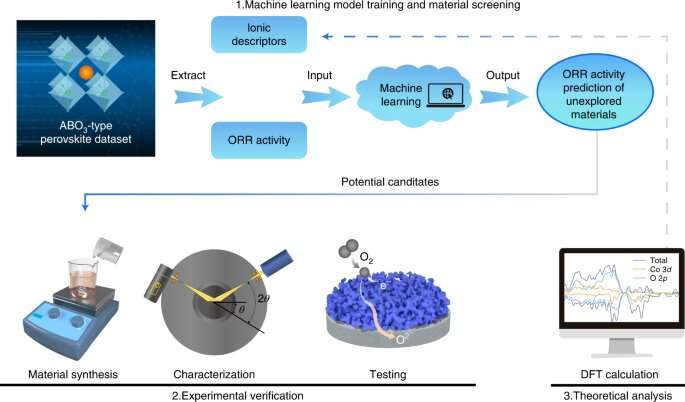The overall workflow diagram. Credit: Nature Energy (2022). DOI: 10.1038/s41560-022-01098-3
Ceramic fuel cells, also known as solid oxide fuel cells, are promising green electrochemical devices offering high energy efficiency, low emissions and fuel flexibility.
The development of high performance and durable cathode materials is key for efficient and durable ceramic fuel cells. However, previous cathode material development based on a trial-and-error approach is time-consuming, expensive and difficult to optimize.
A new paper published in Nature Energy demonstrates an experimentally validated machine-learning-driven approach to accelerate the discovery of efficient oxygen reduction electrodes. Significantly, ionic Lewis acid strength (ISA) is introduced as an effective physical descriptor for the oxygen reduction reaction activity of perovskite oxides.
Using an integrated approach combining machine-learning, density functional theory (DFT) computation and experimental testing, the team successfully identified potential cathode materials for ceramic fuel cell from over 6,000 possible material compositions.
These new materials could enable ceramic fuel cells to achieve high performance and excellent durability. This research study demonstrates a new strategy to facilitate ceramic fuel cell development for clean power generation and carbon neutrality.
More information: Shuo Zhai et al, A combined ionic Lewis acid descriptor and machine-learning approach to prediction of efficient oxygen reduction electrodes for ceramic fuel cells, Nature Energy (2022). DOI: 10.1038/s41560-022-01098-3
Journal information: Nature Energy
Provided by Hong Kong Polytechnic University
























